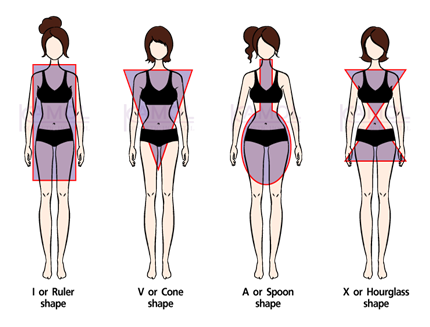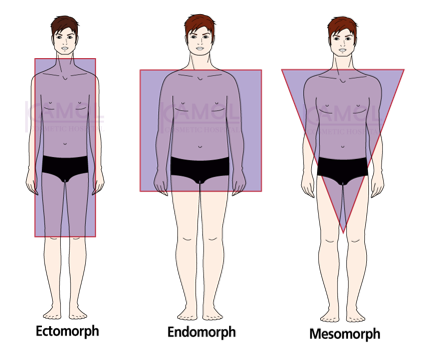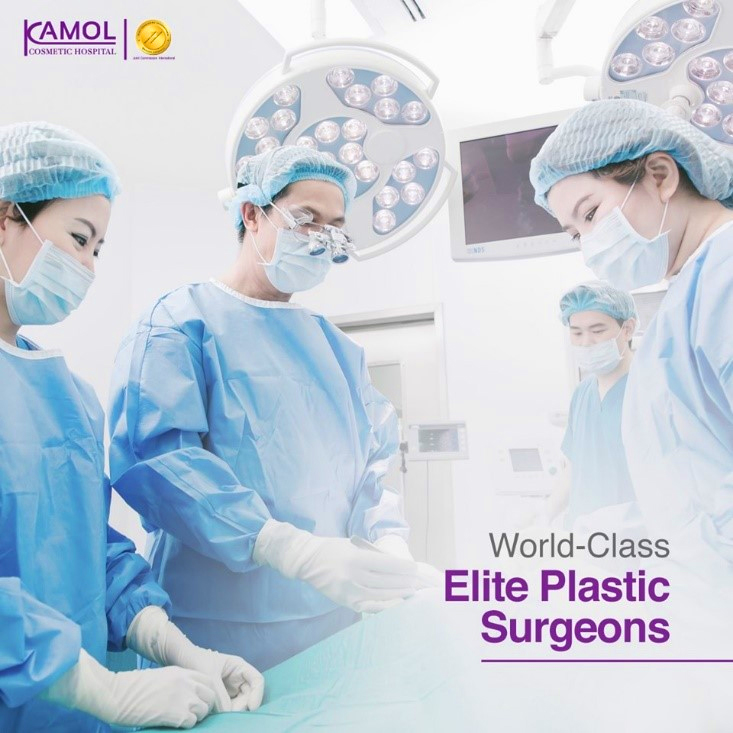ボディースカルピング
ボディースカルピングは、脂肪吸引によって体を再形成する美容外科手術です。側腹部、太もも、腹部、腕、臀部、背中などの、脂肪が多く、より多くのボリュームを必要とする一部の領域では脂肪移植が含まれます。外科医は、彼らの構造とバランスを見ながら新しい体の形を設計および作ります。
私たちは、体の異なる比率と異なる脂肪分布の方法で生まれています。
女性では、それらを4つのグループに分類できます:
- I型または定規型:バスト、ヒップ、ウエストはほぼ同じ割合で、ボディラインはほぼストレートです。脂肪は体全体に分布します。
- V型またはコーン型:肩幅がヒップより広いです。このタイプの体の脂肪分布は、バスト、肩、顔に集中します。
- A型またはスプーン型:バストが小さく、ウエスト、ヒップ、太ももに脂肪沈着があります。
- X型または砂時計型:胸とヒップは同じ幅で、ウエストサイズは胸とヒップよりも9インチ以上小さいです。

図1:女性の体の比率
男性の体のプロポーションは、3つのタイプに分類されます:
- 外胚葉型:小さな骨格、少ない筋肉と狭い肩幅。少ない脂肪。
- 中胚葉型:大きな骨格、筋肉と大量の脂肪。筋肉は上半身、中央、下半身に均等にあり、筋肉は見えにくいです。
- 内胚葉型:ちょうど良い骨格、筋肉と脂肪。筋肉は見えます。

図2:男性の体のプロポーション
ボディースカルピング手術に適している人
- 脂肪は多すぎないが、完璧な体の形を好む男女
- 健康
- 喫煙しない
- ボディースカルピングに対して現実的な期待を持っている
- 肌のハリ・弾力があり、適度な筋緊張がある
ボディースカルピングへの準備
- あなたの目標について外科医に相談し、身体診察、検査室での胸部X線検査を行い、現在の投薬を調整して、手術の準備ができていることを確認します。
- 禁煙する。
- アスピリン、抗炎症薬、ハーブ系サプリメントは、出血を増加させる可能性があるため服用は避ける。
- 手術前に薬を調整する。
ボディースカルピングの手順
- 鎮静または全身麻酔
- 麻酔後、切開は1cm程度になります。切開の数は手術する領域の数によって異なります。膨脹性のある液が運用エリアに配置されます。従来の脂肪吸引では、中空のチューブを使用して脂肪を除去します。レーザーと超音波技術では、レーザーまたは超音波エネルギーを使用して、脂肪を除去する前にその脂肪を溶解します。一部の領域では、より多くのボリュームとデザインを作成し、プロポーションのバランスをとるためのボディシェイプを作成するために、脂肪移植が必要です。
- 切開部を縫合して閉じます。
ボディースカルピングの術後ケア
- 手術後の最初の24〜72時間は、衣服やシーツに血が流出するのは普通のことです。脂肪吸引を行う前に流体を吸引することは、脂肪を除去するうえで最も安全です。
- 圧迫帯はシャワーの時以外は常に着用してください。圧迫帯は腫れを抑え、回復を早めます。圧迫帯をいつ外していいかは医師がお知らせします。
- 自宅で日常の活動を再開してみてください。軽い活動は、体液を体内で動かし続けるため、腫れを抑えることができます。
- 患者は手術後24~48時間にシャワーを浴びることが可能ですが、圧迫帯を再度着用することが難しい場合がある為、誰かに手伝ってもらって下さい。シャワーを浴びる時は、こすり洗いをせずに、石鹸と水で洗い流します。そのあと、清潔なタオルでやさしく乾かします。
- 手術後2週間はまだお風呂に浸かることや、プール、池、海など、傷を濡らさないで下さい。
- 漿膜をリンパ系に取り除く術後マッサージ
- 日常的な活動は禁止されていません。
- 運動は約2週間後から始めるべきです。
- 全てのアポイントメントに出席してください。
- 術後7日目に抜糸します。
ボディースカルピングのリスクと合併症
- 漿液腫処置:漿液腫の治療は医学的技能です。
- 注射器での排出
- ドレインの留置
- 硬化症を誘発するテトラサイクリンのような物質の留置
- 漿液腫皮膜を除去するための修正手術
- 血栓塞栓症:肺血栓塞栓症(PTE)は、肺動脈障害によって引き起こされる病理学的状況です。それは肺の中の酸素欠乏です。患者さんのバイタルサインならびに酸素飽和の経過を追うことが重要です。
- 感染症:熱、寒け、痛みによって見つけることができます。
- 貧血:この症例では、吸引脂肪と組み合わされた失血によって起こります
- 血腫:血液の貯留、内出血により起こります。
- 脂肪塞栓症: 塞栓脂肪による血管の妨害物。
- 皮膚の裂傷
- 線維症:組織の肥厚と瘢痕
- 変形
- 非対称
- 治癒不良




